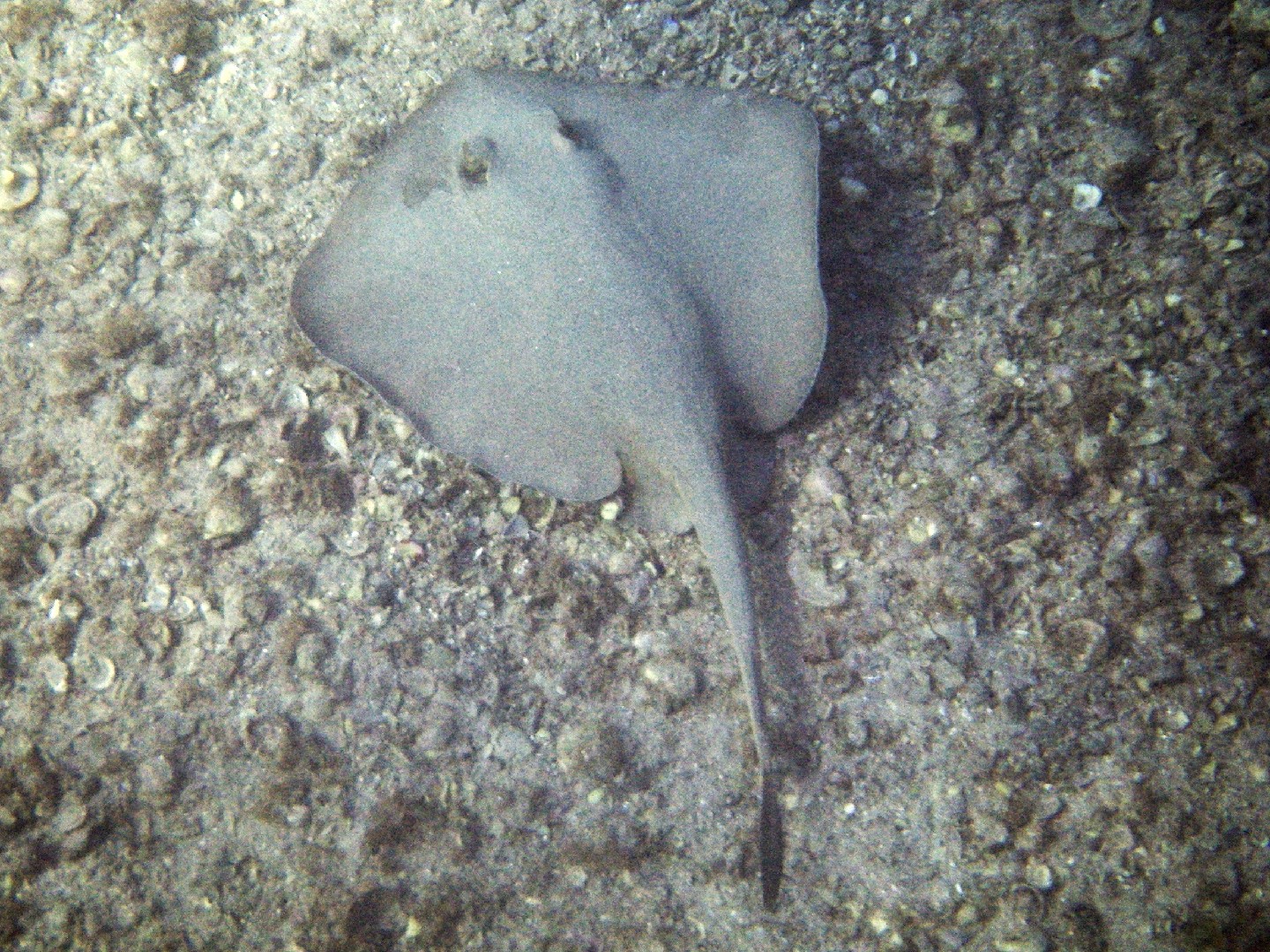Common stingaree
A species of Shovelnose stingaree Scientific name : Trygonoptera testacea Genus : Shovelnose stingaree
Common stingaree, A species of Shovelnose stingaree
Botanical name: Trygonoptera testacea
Genus: Shovelnose stingaree
Content
Description People often ask
 Photo By Yun Huang Yong , used under CC-BY-SA-2.0 /Cropped and compressed from original
Photo By Yun Huang Yong , used under CC-BY-SA-2.0 /Cropped and compressed from original Description
The common stingaree has a rounded pectoral fin disc slightly wider than long, with nearly straight anterior margins that converge at a broad angle on the fleshy snout. The tip of the snout may protrude slightly past the disc. The eyes are of medium size and immediately followed by comma-shaped spiracles with angular posterior margins. The outer rim of each nostril is enlarged into a broad, flattened lobe. A skirt-shaped curtain of skin is found between the nostrils, with a strongly fringed posterior margin that overhangs the small mouth. There is a patch of papillae (nipple-shaped structures) on the lower jaw, and 3–5 papillae across the floor of the mouth. The teeth are small with roughly oval bases. The five pairs of gill slits are short. The pelvic fins are small with rounded margins. The tail measures 86–90% as long as the disc and has a flattened oval cross-section without lateral folds. One or two serrated, stinging spines are placed atop the tail about halfway along its length; just before the sting is a small dorsal fin, which may be reduced to a low ridge in a few individuals. The end of the tail bears an elongated, leaf-shaped caudal fin. The skin is entirely smooth. The common stingaree is an unmarked brownish or grayish above, lightening towards the edges of the fins, and darkening on the dorsal fin and the caudal fin trailing margin (the entire fin is black in juveniles). The underside is white, occasionally with wide dusky bands bordering the lateral margins of the disc. This species can grow to 52 cm (20 in), and possibly 61 cm (24 in) long; records of larger specimens likely represent misidentifications of the eastern shovelnose stingaree (T. imitata).
* Disclaimer: The judgment on toxicity and danger is for reference only. We DO NOT GUARANTEE any accuracy of such judgment. Therefore, you SHALL NOT rely on such judgment. It is IMPORTANT TO SEEK PROFESSIONAL ADVICE in advance when necessary.
People often ask
How big does common stingaree get?
What color is common stingaree?
Scientific Classification
Phylum
Chordates Class
Sharks and rays Order
Stingrays and relatives Family
Stingarees Genus
Shovelnose stingaree Species
Common stingaree